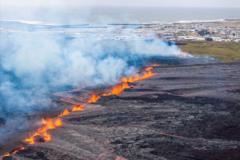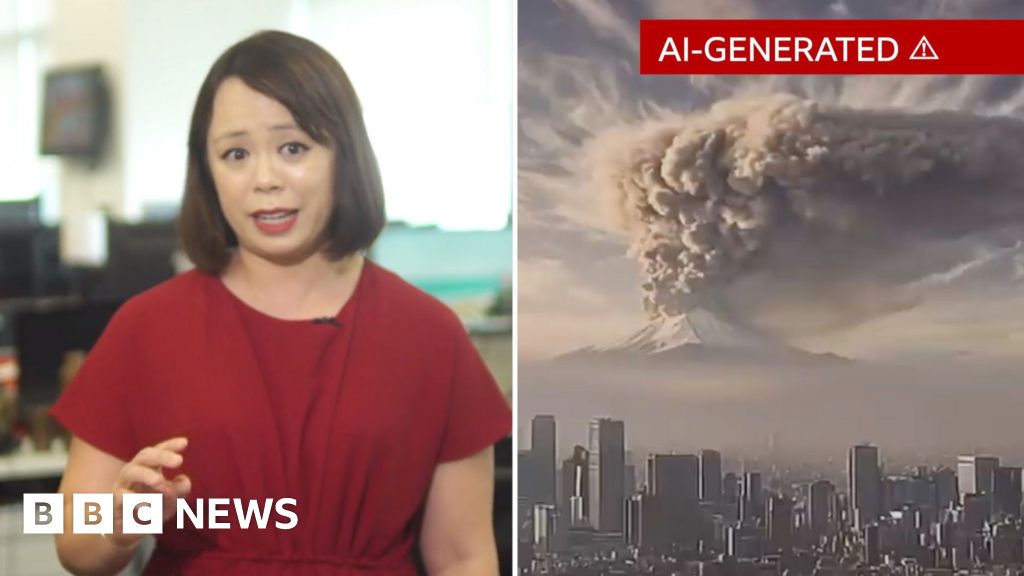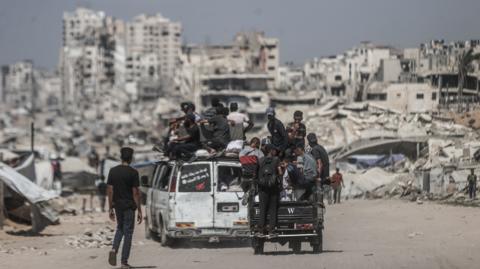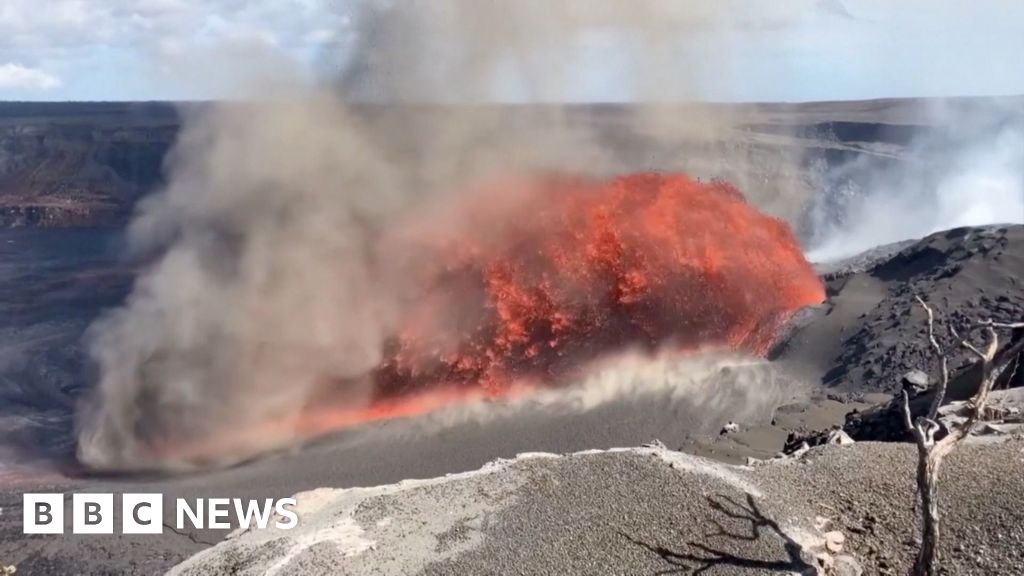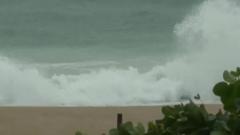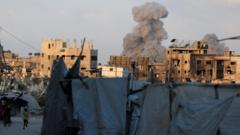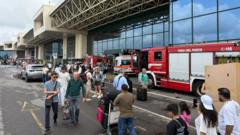The repercussions of the recent volcanic eruption in south-west Iceland are creating a crisis for residents of Grindavik and tourists in the area. The volcano, which has been erupting since the morning, is fountaining lava that glows intensely in hues of orange and red. This eruption has led to a significant crack in the earth, now stretching about 1.2 kilometers (0.75 miles), and multiple earthquakes continue to rattle the region.
Rescue operations are underway to evacuate individuals from the town, which is renowned for its proximity to the famous Blue Lagoon spa. Despite evacuation orders, a small number of residents, including some who have lived in the vicinity of the volcano for years, have chosen to remain in their homes. Asrun Kristinsdottir, president of Grindavik town council, expressed her heightened anxiety due to the incessant seismic activity as she evacuated her residence.
The Icelandic Meteorological Office (IMO) has reported that protective barriers established to shield Grindavik have been compromised by the emergence of a new eruptive fissure. The local police commissioner, Ulfar Ludviksson, stressed that locals must heed safety instructions to leave the danger zone, clarifying that some residents are reluctant to evacuate their homes.
The situation in Grindavik became more urgent with the breaking of a hot water pipeline, indicating significant underground cracking. Rikke Pedersen from the Nordic Volcanological Centre cautioned that the town faces the risk of lava flows encroaching into inhabited areas, which heightens concerns among residents and local authorities.
Thormar Omarrson, a longtime resident of Grindavik who owns a local pizza restaurant, described the emotional toll of evacuation. He and his family moved away from the town last year after persistent warnings about volcanic activity. For him, leaving the community was devastating.
With a historical perspective, since 2023, most of the 4,000 residents were part of a mass evacuation due to volcanic threats, and they have faced continuous eruptions since then. Meteorological data indicates the current magma length extending beneath the crater series is approximately 11 kilometers (6.8 miles), marking the longest observed length since November of the previous year.
Wind patterns have further sparked concerns regarding air quality, as gases emitted from the eruption are predicted to drift towards the capital region. The eruption began at approximately 09:45 local time (10:45 BST), potentially heralding a new chapter of ongoing geological activity in a region that has witnessed several eruptions since 2021, following a historical period of volcanic dormancy lasting 800 years.
As the situation unfolds, the eyes of the world are watching Iceland, a nation with 33 active volcanic systems situated atop the Mid-Atlantic Ridge, where two tectonic plates diverge. The immediate focus remains on ensuring the safety of the residents and managing the volcanic threat while monitoring this extraordinary geological event.
Rescue operations are underway to evacuate individuals from the town, which is renowned for its proximity to the famous Blue Lagoon spa. Despite evacuation orders, a small number of residents, including some who have lived in the vicinity of the volcano for years, have chosen to remain in their homes. Asrun Kristinsdottir, president of Grindavik town council, expressed her heightened anxiety due to the incessant seismic activity as she evacuated her residence.
The Icelandic Meteorological Office (IMO) has reported that protective barriers established to shield Grindavik have been compromised by the emergence of a new eruptive fissure. The local police commissioner, Ulfar Ludviksson, stressed that locals must heed safety instructions to leave the danger zone, clarifying that some residents are reluctant to evacuate their homes.
The situation in Grindavik became more urgent with the breaking of a hot water pipeline, indicating significant underground cracking. Rikke Pedersen from the Nordic Volcanological Centre cautioned that the town faces the risk of lava flows encroaching into inhabited areas, which heightens concerns among residents and local authorities.
Thormar Omarrson, a longtime resident of Grindavik who owns a local pizza restaurant, described the emotional toll of evacuation. He and his family moved away from the town last year after persistent warnings about volcanic activity. For him, leaving the community was devastating.
With a historical perspective, since 2023, most of the 4,000 residents were part of a mass evacuation due to volcanic threats, and they have faced continuous eruptions since then. Meteorological data indicates the current magma length extending beneath the crater series is approximately 11 kilometers (6.8 miles), marking the longest observed length since November of the previous year.
Wind patterns have further sparked concerns regarding air quality, as gases emitted from the eruption are predicted to drift towards the capital region. The eruption began at approximately 09:45 local time (10:45 BST), potentially heralding a new chapter of ongoing geological activity in a region that has witnessed several eruptions since 2021, following a historical period of volcanic dormancy lasting 800 years.
As the situation unfolds, the eyes of the world are watching Iceland, a nation with 33 active volcanic systems situated atop the Mid-Atlantic Ridge, where two tectonic plates diverge. The immediate focus remains on ensuring the safety of the residents and managing the volcanic threat while monitoring this extraordinary geological event.

